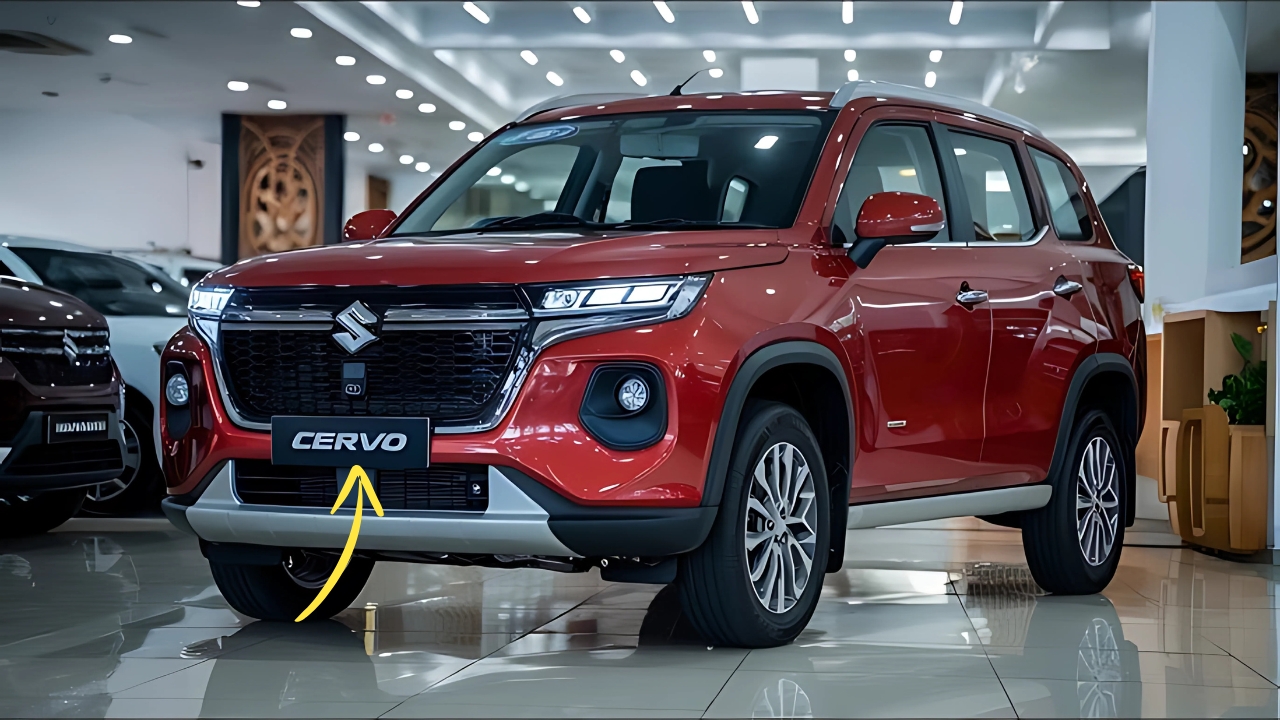Maruti Suzuki Cervo: The automotive landscape continues to evolve with manufacturers exploring compact solutions for increasingly congested urban environments.
The Maruti Suzuki Cervo represents an intriguing proposition in the micro-car segment, drawing inspiration from successful kei car concepts while adapting to Indian market requirements.
This comprehensive analysis examines how such a vehicle could address modern urban transportation challenges.
Maruti Suzuki Cervo Design Concept and Urban Philosophy
The Cervo concept embraces ultra-compact dimensions that prioritize maneuverability in tight urban spaces.
The design philosophy focuses on maximizing interior space within minimal external footprint, challenging conventional automotive proportions.
The tall, upright stance ensures excellent visibility while creating surprising interior roominess despite compact dimensions.
The exterior styling balances functionality with modern aesthetics. Short overhangs at both ends maximize interior space while enabling exceptional maneuverability.
Large glass areas create an airy cabin environment while providing excellent visibility for navigating crowded streets. The vertical design language emphasizes space efficiency over traditional automotive styling conventions.
Contemporary design elements include LED lighting technology and aerodynamic optimization despite the upright profile.
Color options would likely span from conservative shades to vibrant hues, allowing personalization while maintaining the vehicle’s urban-friendly character.
Interior Space Innovation
Despite compact external dimensions, interior packaging demonstrates clever space utilization. The cabin layout prioritizes passenger comfort through innovative seating arrangements and storage solutions.
Slim seat designs maximize legroom while maintaining adequate support for city driving distances.
The dashboard architecture embraces minimalism, reducing visual clutter while maintaining functionality.
Digital displays replace traditional analog gauges, saving space while providing essential information clearly.
Control layouts remain intuitive, ensuring ease of use without overwhelming first-time users.
Storage compartments appear throughout the cabin, addressing the reality that small cars must still accommodate daily life necessities.
Door pockets, dashboard cubbies, and innovative under-seat storage maximize utility within limited space. These practical solutions enhance daily usability significantly.
Powertrain Efficiency and Performance
The Cervo would likely feature small-displacement engines optimized for urban efficiency rather than outright performance. Engine options could include highly efficient three-cylinder units delivering adequate power for city speeds while maximizing fuel economy.
The focus remains on low-end torque for comfortable progress in stop-and-go traffic.
Transmission choices would prioritize ease of use and efficiency.
Automated manual transmissions or CVT options would suit urban driving patterns perfectly, eliminating clutch operation fatigue in heavy traffic.
Gear ratios would optimize urban drivability rather than highway performance.
The lightweight construction inherent to compact dimensions contributes significantly to efficiency.
Reduced weight means smaller engines provide adequate performance while achieving exceptional fuel economy figures crucial for cost-conscious buyers.
Urban Driving Dynamics
Driving characteristics would prioritize maneuverability over dynamic excellence. The short wheelbase enables exceptional turning radius capabilities, crucial for U-turns in tight spaces and navigating congested areas.
Light steering ensures effortless parking and low-speed maneuvering.
Suspension tuning would balance comfort with the vehicle’s lightweight nature.
The setup would effectively absorb urban road imperfections while maintaining stability. Higher center of gravity from the tall design requires careful suspension calibration to ensure confidence-inspiring handling.
Visibility emerges as a key strength, with the upright seating position and large glass areas providing excellent sightlines.
This characteristic proves invaluable in congested traffic where awareness of surrounding vehicles and pedestrians remains critical.
Safety Considerations
Modern safety requirements would necessitate comprehensive protection despite compact dimensions. The structure would require high-strength materials in strategic areas to create a protective safety cell.
Crumple zones, though limited by size constraints, would need optimization for urban collision scenarios.
Airbag deployment strategies would require careful consideration given the compact cabin dimensions. Advanced seatbelt systems with pretensioners and load limiters would provide crucial occupant protection.
Electronic stability systems would help manage the higher center of gravity inherent to tall, narrow designs.
Advanced driver assistance features could include city-specific technologies like automatic emergency braking optimized for urban speeds.
Parking sensors and cameras would prove particularly valuable given the vehicle’s urban focus.
Technology and Features
Despite affordability requirements, modern connectivity remains essential. Smartphone integration would provide navigation and entertainment without expensive built-in systems.
USB charging ports and Bluetooth connectivity address basic modern needs effectively.
The climate control system would require efficiency optimization given the small cabin volume.
Effective ventilation design ensures comfort without excessive energy consumption. These considerations directly impact both comfort and operating efficiency.
Market Positioning and Practicality
The Cervo would target urban residents seeking affordable, efficient transportation for daily commuting.
Young professionals, elderly drivers requiring easy maneuverability, and families needing second vehicles for city use represent potential demographics.
Parking space constraints in Indian cities make ultra-compact vehicles increasingly attractive.
The ability to fit in smaller parking spaces provides genuine daily convenience.
Lower operating costs through exceptional fuel efficiency appeal to budget-conscious buyers.
Manufacturing and Cost Considerations
Achieving affordability would require innovative manufacturing approaches.
Platform sharing with global small car programs could distribute development costs.
Local component sourcing would reduce costs while supporting domestic industry.
Simplified features and focused equipment levels would maintain accessibility.
The emphasis remains on providing essential transportation rather than luxury, though build quality must meet Maruti Suzuki’s established standards.
Environmental Impact
Small displacement engines and lightweight construction inherently reduce environmental impact. Lower fuel consumption translates directly to reduced emissions.
The minimal material usage in construction represents responsible resource utilization.
Urban air quality benefits from vehicles optimized for city efficiency rather than adapted larger vehicles operating inefficiently in congestion.
Maruti Suzuki Cervo Conclusion
The Maruti Suzuki Cervo concept represents thoughtful consideration of evolving urban transportation needs. Through ultra-compact dimensions, exceptional efficiency, and focused urban optimization, such vehicles address genuine market requirements.
While challenging conventional automotive preferences, the growing constraints of urban environments make these solutions increasingly relevant.
For cities grappling with congestion and parking limitations, vehicles like the Cervo could provide practical solutions that balance individual mobility needs with collective urban challenges.

